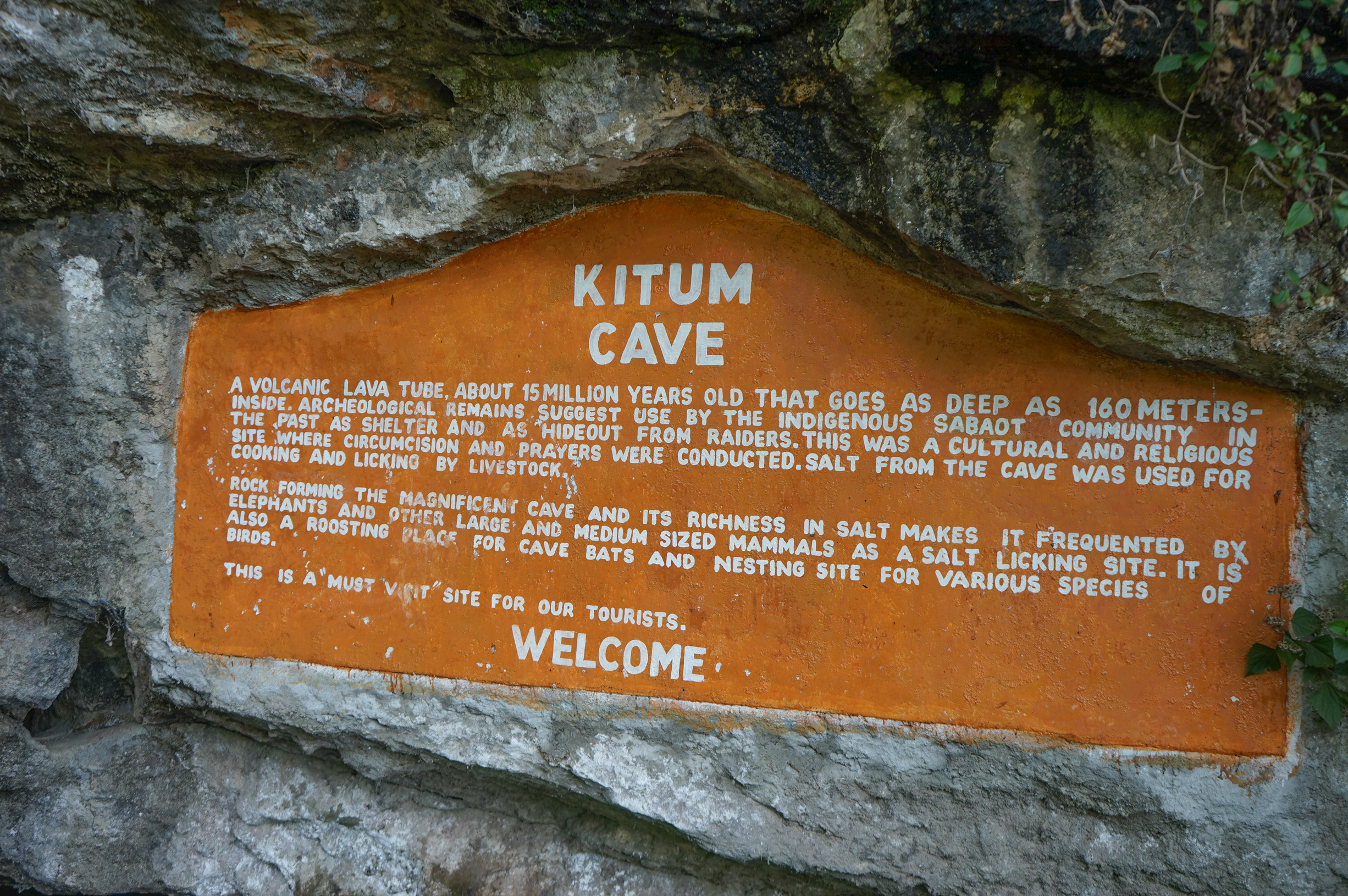On the Kenya-Uganda boundary lies Mount Elgon. Inside this extinct volcano, there is a fascinating animal population: Cave Elephants.
Located on the eastern side of Mount Elgon, within Kenya’s Mount Elgon National Park, elephants serenely forage in the forested surroundings during the daytime. However, at sunset, these elephants make their way up the mountain and into the famous Kitum Cave.

Kitum Cave entrance.
The entrance is idyllic and is found behind a beautiful waterfall and bountiful foliage. The fascination for these elephants is what lies on the surface of the volcanic rock – salt.
Elephants need minerals for a healthy lifestyle and pregnancy. Often, they get this from the soil or surrounding vegetation, however, in this location rainfall is three times the amount in London, which makes the vegetation on the mountain mineral-depleted. This is why they go through all of this effort to traverse the rocky caves. These caves are abundant in calcium, magnesium, and sodium, and a single elephant can excavate up to 20 kilograms (44 pounds) of rock in one night.
The elephants have been coming here for centuries. This is evidenced by the entrance wall, which is marked with gouges made by the tusks of previous elephants as they mine the salt-rich rock. To get the nutrients they need, elephants squeeze their way through at night in complete darkness. Some are pregnant and some bring their offspring with them.
These elephants can spend several hours in the caves, both to mine the salt and also to make their way safely through. They scrape the walls with their tusks and then collect the mineral-rich sand with their trunks.
These elephants have been visiting for centuries, and have changed the structure, creating tunnels with their tusks. The journey and technique of scraping the walls are passed on from generation to generation – something that only exists on Mount Elgon.
Historically, the cave-mining elephants ranged across the whole mountain on both the Ugandan and Kenyan sides. Sadly, the population on the Ugandan side was wiped out in the 1970s, which has left no permanent elephant population on that side of the mountain.
On the Kenyan side, there are thought to be 350 elephants, however, this number is significantly smaller than in the past. There are continuous threats from poaching and human-elephant conflict. The human-elephant conflict is mainly due to the elephants raiding the young tree seedling in Kenya and destroying crops, which has resulted in the death of elephants and humans alike.
Now, there is a new project called the Mount Elgon Elephant Project. This was established to provide the most comprehensive information about elephant behavior and to try and reduce the conflict in order to mitigate any population falls and save the elephants from a similar fate to the Ugandan elephant side.
There are many strange things that dwell in caves, from soft-ball sized spiders to Olms, however, elephants must be one of our favorites!
Source Link: Kitum Cave Elephants Go Deep Into Caves To Mine At Night